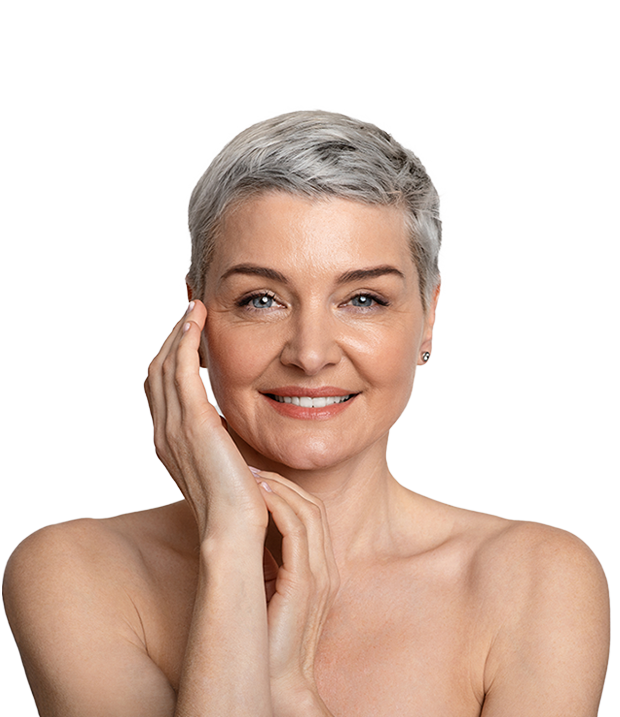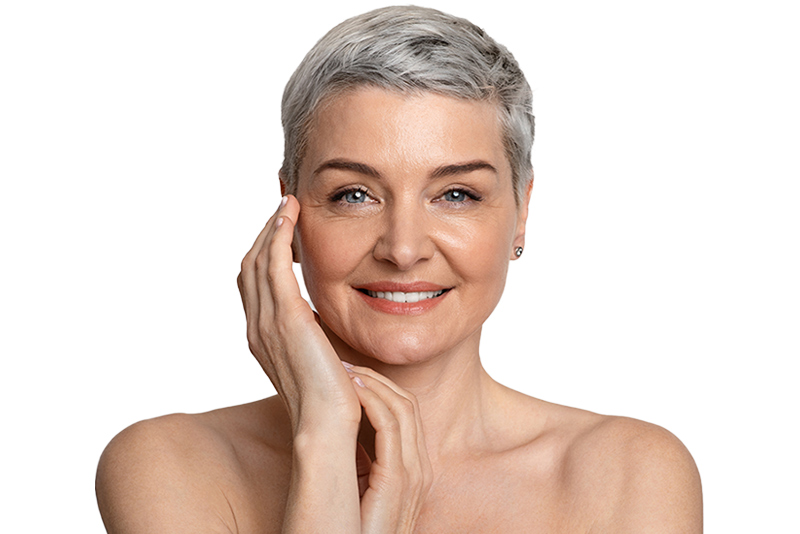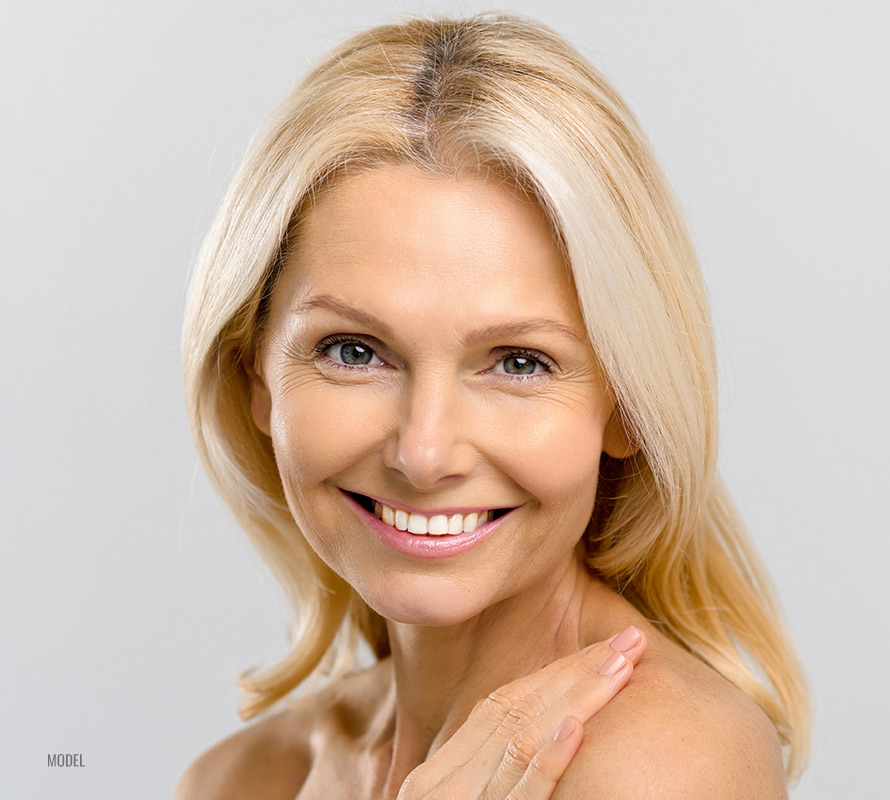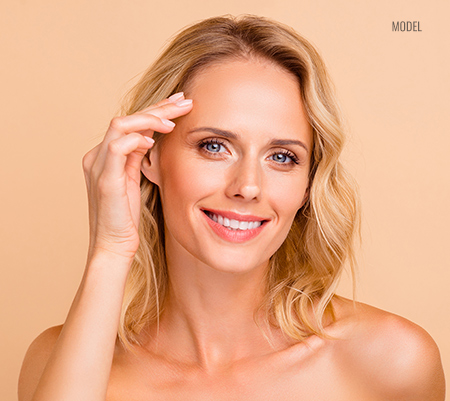


If the eyes are the windows to the soul, eyebrows are the frames that set off your eyes and contribute significantly to that all-important first impression. Brow lift surgery, also known as a forehead lift or browplasty, is a cosmetic procedure aimed at rejuvenating the appearance of the forehead and brow area. As one of the most visible areas of the face, the forehead and brows can show signs of aging over time, such as drooping skin, furrows, and wrinkles.
Brow lift surgery is designed to address these concerns by lifting and tightening the skin and muscles of the forehead, resulting in a more youthful and refreshed appearance.
Am I a Candidate for a Brow Lift?
If your brows are low or straight (not arched), you may be a good candidate. If you see furrowed brows, “11 lines,” or deep creases in your forehead, you might be a good candidate for a brow lift. The term “11 lines,” also called glabellar lines, denotes the vertical furrows that may emerge between the eyebrows due to stress, age, or both. Ideal candidates do not smoke and are committed to following all Dr. Weinfeld’s instructions.
Call (512) 253-2845 to schedule your consultation with Dr. Weinfeld. Learn more about brow lift surgery, and find out if you’re a good candidate for this procedure.

What Are the Benefits of Brow Lift Surgery?
Brow lift surgery offers numerous benefits for individuals seeking to rejuvenate the appearance of their upper face:
- Elevated brow position: Brow lift surgery lifts the position of the eyebrows, reducing the appearance of sagging and creating a younger and more refreshed look.
- Reduced or eliminated forehead wrinkles: By tightening the skin and muscles of the forehead, brow lift surgery can reduce the appearance of horizontal forehead wrinkles and furrows to restore a smoother and more rejuvenated appearance. The vertical oblique lines between the eyebrows, known as the “11 lines,” are also reduced or even eliminated.
- Improved brow symmetry: Brow lift surgery can address asymmetry in the eyebrows for a balanced and harmonious relationship between the brows and other facial features.
- Bigger eyes: Lifting the brows can open up the eye area, making the eyes appear bigger, alert, and more youthful.
- Enhanced self-confidence: Achieving a more youthful-looking and rejuvenated upper face through brow lift surgery can boost self-esteem and confidence, leading to a more positive outlook.
How Is a Brow Lift Performed?
A successful surgery includes at least two steps: the consultation and the procedure itself.
The Consultation
Before scheduling your brow lift surgery, you’ll need to meet with Dr. Weinfeld for a consultation. After listening carefully to your concerns and goals, he will assess your health, medical history, and current health conditions to ensure you are a good candidate for this surgery.
Dr. Weinfeld also performs a comprehensive examination of your forehead and brow to assess skin elasticity, muscle tone, wrinkle depth, and the extent of laxity. He will explain the surgical technique best suited to achieve your desired results, whether it involves a traditional brow lift, endoscopic brow lift, or temporal brow lift, and answer any questions you have.
You will receive an accurate cost quote and detailed instructions on pre-operative preparations, including medication adjustments and lifestyle modifications.
Brow lift surgery is typically performed as an outpatient procedure under general anesthesia or intravenous sedation, depending on the extent of the surgery and patient preference. The surgical technique can vary depending on the patient’s unique anatomy and aesthetic goals.
Combining Other Cosmetic Procedures With Your Brow Lift
The comprehensive effect of the endoscopic brow lift on the upper third of the face compliments other cosmetic facial surgeries, such as the following:
- Fat transfer: to restore volume to the cheek and midface areas
- Facelift surgery: to achieve comprehensive facial rejuvenation
- Upper lid blepharoplasty : for more complete upper face results
- Combination of upper and lower eyelid surgery : for increased mid-to-upper face enhancement
What Is Recovery Like After Brow Lift Surgery?
Recovery after brow lift surgery usually involves mild to moderate swelling, bruising, and discomfort, which can be controlled with prescribed pain medication and a cold compress. Patients are typically advised to follow these five rules:
- Follow all postoperative instructions closely.
- Keep the head elevated to reduce swelling and promote healing.
- Take prescribed medication as directed to manage pain.
- Attend follow-up appointments with our surgeon so he can check your healing progress and address concerns.
- Avoid strenuous activities, such as heavy lifting and bending over, until cleared by Dr. Weinfeld to resume.
What Results Can I Expect From a Brow Lift?
Long-lasting results can be accomplished with the endoscopic brow lift, including:
- Youthful and natural brow position
- Softening of forehead lines
- Elevation of the temple, lateral upper eyelid, and the upper cheek

Learn More About Brow Lift Surgery in Austin, Texas
Your eyebrows accentuate your facial expressions. Brow lift surgery can accomplish dramatic improvements in the upper face, and our board-certified Austin plastic surgeon has the expertise you need to achieve excellent results.
Schedule a consultation with Dr. Adam Weinfeld by calling (512) 253-2845.
Get In Touch
Patients respond to Dr. Weinfeld's expertise and caring patient focused approach. If you have any questions about a procedure or are ready to schedule a consultation, please call or fill out the form below.
Office
Phone: 512-559-1376
Office & Surgery Center
Phone: 512-559-1376
This facility is only for cosmetic and non-insurance based procedures. If you seek insurance based treatments or reconstructive procedures, please search for Dr. Weinfeld in his other facility.
*Please verify the location of your appointment.
Connect with us
